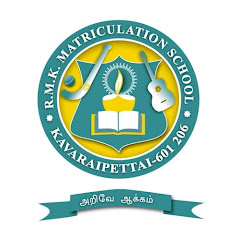I. Fill in the blanks
1. Ampex's Editec 2. Edutainment 3. Monomedia 4.Digital 5. Audio Editing 6. Digital Audio 7. Digital Audio Editor 8.Cable operators 9. Cable Modern Termination System 10. Edit Decision List [EDL]
II. Answer the following:
1. How computers are used in Education?
While learning education softwares virtually turn a classroom into an entertainment.
It is fill with colourful graphics, animation, sound effects and interactive tools to make learning a fun.
2. Define Video Editing and Audio Editing.
Video Editing: It is the process of modifying segments of video to form another piece of video.
Audio Editing: It is a process of changing recorded sound and storing it on recording medium.
3. What is Linear editing?
Linear editing is the process, where one or more video tape players and separate video recorders are used to piece together the final video footage.
4. What is Digital Audio Editor?
Digital audio editor is a computer application, which allows manipulation of digital audio for editing.
5. How computers are used in games?
Computer games have high-end 3-dimensional graphics with high quality stereo sound thus making the games more realistic and interactive.
6. What is non-linear editing?
It refer to the technique of transferring the video signal to random access medium.
In non-linear editing the original source is not altered during editing.
7.What is Analog Audio and Digital Audio?
Analog audio, where audio is recorded as magnetic impression with electric signal.
Digital audio, where audio is recorded as a sequence of numbers and digits.
8. Name the steps involved in creating digital audio.
The steps involved in creating digital audio are,
1. Recording 2. Digitizing 3. Editing 4. Mixing 5. Burning
III.ANSWER IN DETAIL
1.Explain the stages involved in video editing?
Video editing has gone through a major phase of development from mere physical film cutting, electronic transfer editing to digital non-linear editing.
· Physical film cutting
The first offline system for video known as ESG, system of rough cutting of film and confirming on tape.
· Electronic transfer editing
Here original source recording are left unaltered and discrete video shots and sounds were re-recorded in a new sequence on a edit master.
· Digital non-linear editing
Where one or more video tape players and separate video recorders are used to piece together the final video footage.
Digital audio editor is a computer application, which allows manipulation of digital audio for editing.
This editor allows you to do the following:
1. RECORD: Here audio from different sources can be captured and stored in computer as digital audio.
2. EDIT: The editor allows you to edit the start time, stop time and duration of any sound on the audio time line.
3. MIX: Audio from different sources can be combined by insertion at various levels.
4. APPLY EFFECTS: Here various effects are applied to the audio
5. PLAY BACK: Audio after edit and mixing are often sent or stored on one or more outputs
6. CONVERSION: Conversion is done from different file formats.

No comments:
Post a Comment